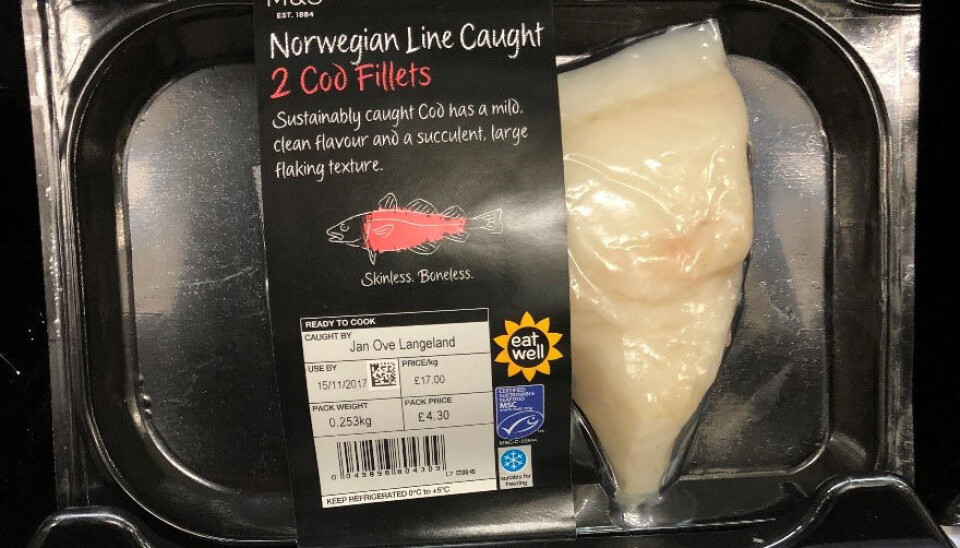
At one point fish packaging even told you who caught the fish you just bought
Pictures of fish packaging, taken over several years in the 2000s, show that clear changes have been made regarding the information given to consumers about the fish they buy.
Pre-packaged fish has become increasingly common in European stores over the past ten years. A major reason for this is that pre-packaged fish can potentially be sold in all types of grocery stores, not just stores that have fish counters. This helps make fish more accessible to consumers, and increases sales.
The UK - one step ahead
In Norway, we have become well acquainted with this type of pre-packaged fish in recent years, but the UK has been ahead of us for a long time. In the early 2000s, the UK already had several types of pre-packaged fish available, including several species (salmon, cod and haddock) and types of product (loin, fillet, ready-made meals).
Maybe this will give us an idea of the types of products that are on their way to Norway?
I have been following this development in the UK and have visited grocery stores there for almost 20 years. Here are some examples of developments regarding pre-packaged cod in the UK. I have used pictures from Marks & Spencer (M&S), seeing as this supermarket chain, in my opinion, has been the most innovative.
It is most interesting to look at the type of packaging and information on the front of the products, since this is what most consumers read. Information that is not on the front will be printed on the back of the product, but is most likely perceived as being less important by the producer or the supermarket chain.
Packed in a tray with little information
Trays were the most common type of packaging used for cod between 2000 and 2010.
During this period, the information was often simple and focused on whether the fish was skinless and boneless, and whether it could be frozen or not. In addition, the products had an ‘Eat well’ logo that helped consumers choose healthy food.
Some of the other chains also stated that the cod was fresh, as can be seen on this M&S packaging (M&S, 2005).
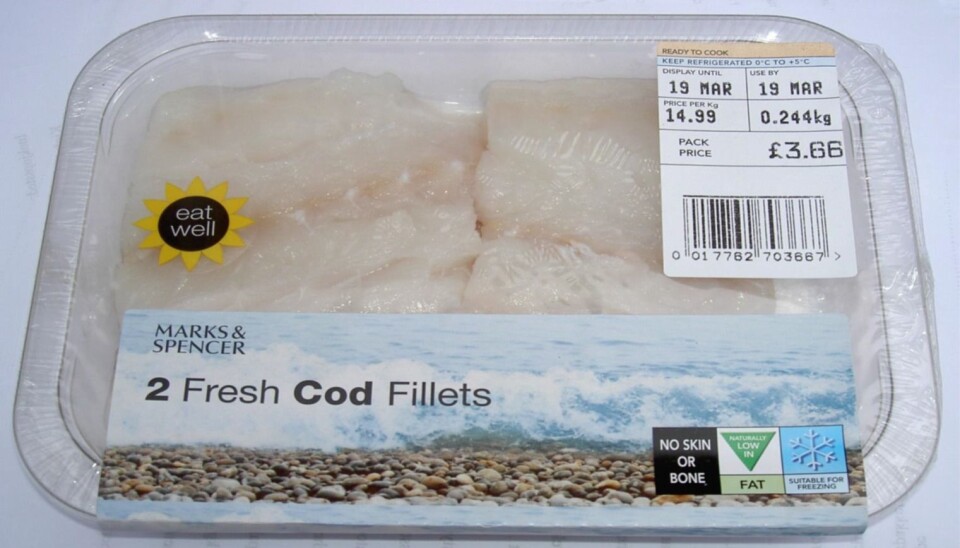
Skin pack and sustainability
After 2010, M&S packaged their cod in transparent, airtight plastic packaging called a ‘skin pack’, as can be seen in the adjacent picture (M&S, 2010). However, trays were still the most common type of packaging used for cod in other UK supermarket chains.
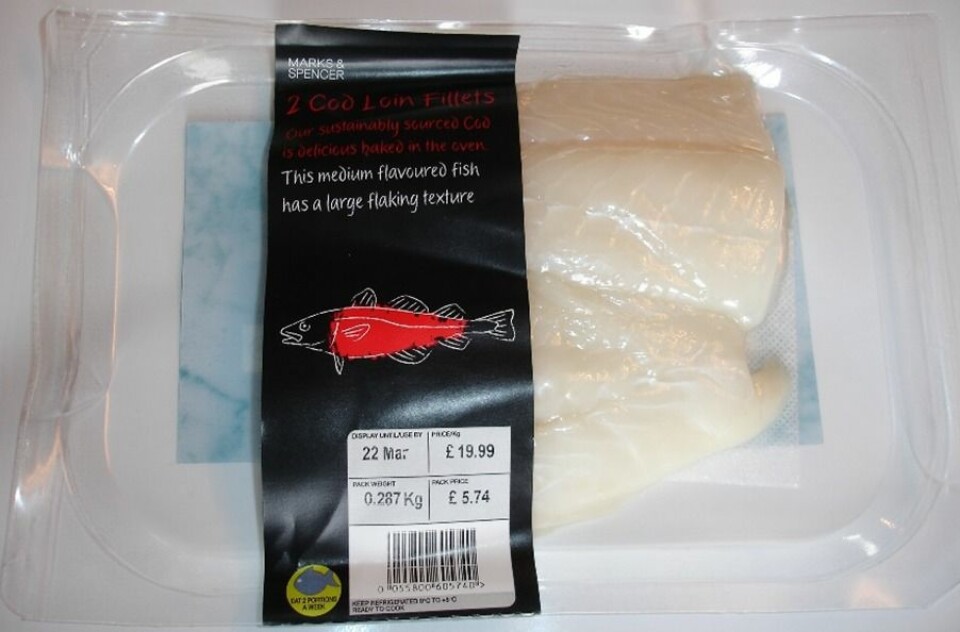
Most chains focused on information about the sustainability of the product. Many of the chains marketed their products as line-caught fish. The ‘Eat well’ logo disappeared.
There was little information on the front of the packaging telling customers whether the fish was fresh or had been frozen. A major reason for this was a new EU regulation stipulating that thawed frozen products had to be labelled ‘defrosted’. This information was mainly found on the back of the packaging. This is still the situation today.
Environmental labels, origin and taste
In 2013, M&S cod was packaged in a black skin pack. Several chains had started to use skin packs, but tray packaging was still the most common method used.
Information about the type of fishing methods used (line-caught) and sustainability are important for most chains. Several chains have adopted the Marine Stewardship Council (MSC) ecolabel, which shows that the fish is certified as being sustainable caught.
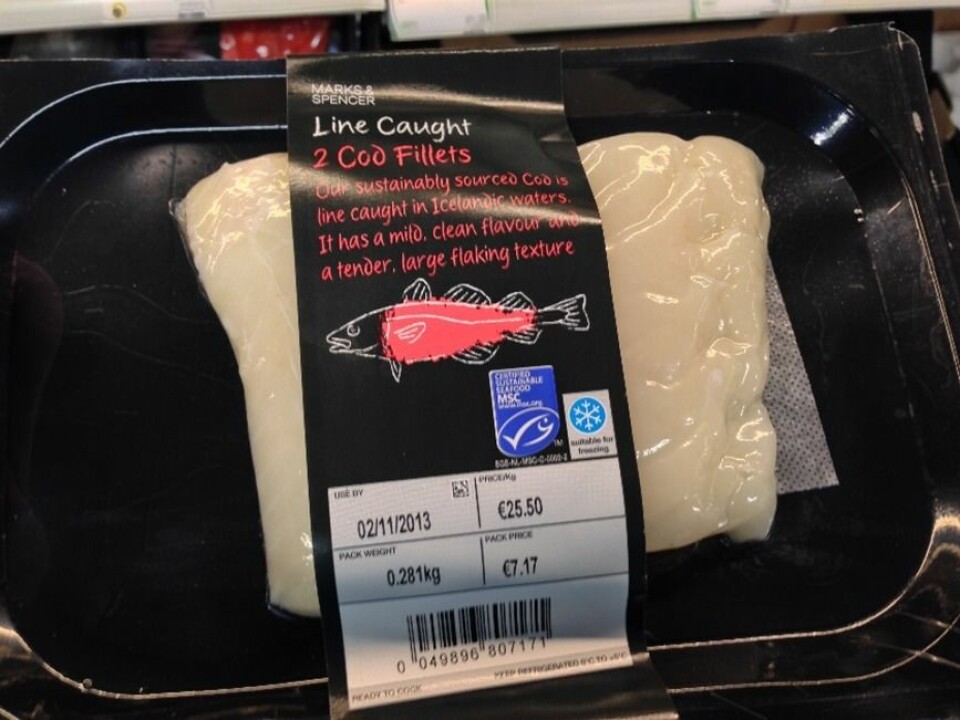
The country of origin is used by some chains, but M&S also focuses on sensory properties such as taste and texture.
More advanced information
In 2017, M&S cod continued to be packaged in a black skin pack. Most other chains now also use skin packs as a method of packaging cod fillets.
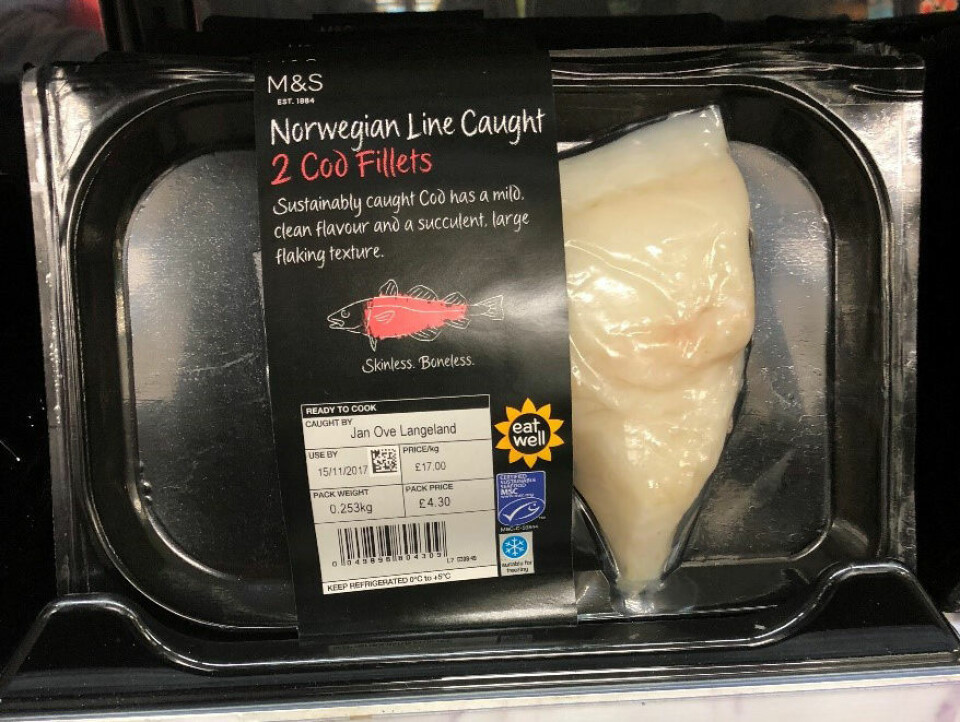
Information on the front of the products has generally become more advanced. The vast majority of chains have adopted the MSC logo. It has also become common to state the type of fishing method that has been used, and most often the fish has been line-caught.
The country of origin is used by several chains, the most common of which are Norway and Iceland. Several chains also provide sensory properties such as taste and/or texture.
The ‘Eat well’ logo has returned and M&S provide the name of the person or company that caught the fish.
Health and sustainability
A few changes occurred during the autumn of 2019. The packaging had become transparent and the name of the person or company that caught the fish had disappeared.
Developments in the UK regarding pre-packaged cod have gone from tray-packed cod fillets to skin packs, and a lot more information has been provided over the past 20 years.

Developments regarding pre-packaged cod in the UK follow global market trends, providing information that highlights the megatrends of health, sustainability and indulgence.
In the future, I think that more environmentally friendly packaging will enter the market; there continues to be a lot of plastic packaging around the products. Hopefully, new solutions will be developed that provide better quality and shelf life.
In terms of information, I think that sustainability will become even more important, and that information about a product’s carbon footprint and perhaps its social sustainability will be more common in the future.
































